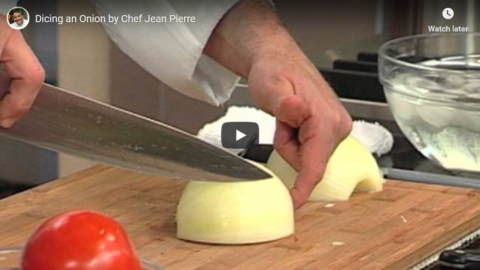When Voltaire made his often-quoted statement that the country of Britain has “a hundred religions and only one sauce”, he was saying something which was untrue and which is equally untrue today, but which might still be echoed in good faith by a foreign visitor who made only a brief stay and drew his impressions from hotels and restaurants. For the first thing to be noticed about British cookery is that it is best studied in private houses, and more particularly in the homes of the middle-class and working-class masses who have not become Europeanised in their tastes. Cheap restaurants in Britain are almost invariably bad, while in expensive restaurants the cookery is almost always French, or imitation French. In the kind of food eaten, and even in the hours at which meals are taken and the names by which they are called, there is a definite cultural division between the upper-class minority and the big mass who have preserved the habits of their ancestors.
Generalising further, one may say that the characteristic British diet is a simple, rather heavy, perhaps slightly barbarous diet, drawing much of its virtue from the excellence of the local materials, and with its main emphasis on sugar and animal fats. It is the diet of a wet northern country where butter is plentiful and vegetable oils are scarce, where hot drinks are acceptable at most hours of the day, and where all the spices and some of the stronger-tasting herbs are exotic products. Garlic, for instance, is unknown in British cookery proper: on the other hand mint, which is completely neglected in some European countries, figures largely. In general, British people prefer sweet things to spicy things, and they combine sugar with meat in a way that is seldom seen elsewhere.
Finally, it must be remembered that in talking about “British cookery” one is referring to the characteristic native diet of the British Isles and not necessarily to the food that the average British citizen eats at this moment. Quite apart from the economic difference between the various blocks of the population, there is the stringent food rationing which has now been in operation for six years. In talking of British cookery, therefore, one is talking of the past or the future – of dishes that the British people now see somewhat rarely, but which they would gladly eat if they had the chance, and which they did eat fairly frequently up to 1939.
George Orwell, “British Cookery”, 1946. (Originally commissioned by the British Council, but refused by them and later published in abbreviated form.)
November 9, 2019
QotD: British Cookery
August 22, 2019
No Wheat? Rice Bread – Gluten Free Recipe
Townsends
Published on 18 Jun 2018Today’s featured cookbook ➧ https://amzn.to/2MCOF6A ➧➧
Visit Our Website! ➧ http://www.townsends.us/ ➧➧
Help support the channel with Patreon ➧ https://www.patreon.com/townsend ➧➧
August 19, 2019
Cooking With Carrow – Episode 02
Zombie Orpheus Entertainment
Published on 11 Jul 2019“Conjure Milk Raspberry Scones” with Brian Lewis and Christian Doyle, from the recipe by The Gluttonous Geek.
August 13, 2019
How to Make Really Good Garlic Bread
America’s Test Kitchen
Published on 3 Mar 2019Keith shows Bridget how to make the absolute best garlic bread.
Get the recipe for Really Good Garlic Bread: http://cooks.io/2I9Anbx
Buy Our Winning Rasp-Style Grater: https://cooks.io/2VrLqlUABOUT US: Located in Boston’s Seaport District in the historic Innovation and Design Building, America’s Test Kitchen features 15,000 square feet of kitchen space including multiple photography and video studios. It is the home of Cook’s Illustrated magazine and Cook’s Country magazine and is the workday destination for more than 60 test cooks, editors, and cookware specialists. Our mission is to test recipes over and over again until we understand how and why they work and until we arrive at the best version.
If you like us, follow us:
http://americastestkitchen.com
July 20, 2019
Early American Ginger Beer – 18th Century Cooking
Townsends
Published on 2 Oct 2017In this episode we make a simple and delicious, 18th century Ginger Beer. #townsendsgingerbeer
Our suggested books on brewing▶ http://www.townsends.us/book-recommen… ▶▶
Help support the channel with Patreon ▶ https://www.patreon.com/townsend ▶▶
Check Out Our Website! ▶ http://www.townsends.us/ ▶▶
July 14, 2019
How To Cook Perfect Eggs Every Time
July 8, 2019
Dicing an Onion by Chef Jean Pierre
ChefJeanPierre
Published on 5 Jan 2012Do you struggle trying to dice an onion? Chef Jean Pierre shows you the easiest way to dice an onion without shedding a tear.
June 24, 2019
JourneyQuest: Cooking with Carrow 01
Zombie Orpheus Entertainment
Published on 21 Jun 2019Undead chef Carrow (Brian Lewis) introduces Rilk’s Wolfback, with special guest Rilk (Jesse Lee Keeter).
We don’t post to YouTube much anymore, but you can catch up on JourneyQuest, The Gamers, and Strowlers at
http://www.amazon.com/v/zombieorpheus (US/UK)
http://watch.thefantasy.network/zombi… (worldwide)
May 9, 2019
Equipment Review: The Best Heavy Duty Cutting Boards
America’s Test Kitchen
Published on 5 Apr 2019Each cutting board model had its fans. But a few factors made certain boards more durable, more pleasant to cut on, and more foolproof to maintain.
Buy our winning heavy-duty cutting board: https://cooks.io/2HZ4oOc
Behind the testing: https://cooks.io/2Ie5yF0
Full testing details and ranking chart: https://cooks.io/2CSPWTBWatch more equipment reviews: https://www.youtube.com/watch?v=KDfNw…
ABOUT US: Located in Boston’s Seaport District in the historic Innovation and Design Building, America’s Test Kitchen features 15,000 square feet of kitchen space including multiple photography and video studios. It is the home of Cook’s Illustrated magazine and Cook’s Country magazine and is the workday destination for more than 60 test cooks, editors, and cookware specialists. Our mission is to test recipes over and over again until we understand how and why they work and until we arrive at the best version.
May 8, 2019
How To Ferment And Make Your Own Hot Sauce, Easily
Joshua Weissman
Published on 5 Apr 2019Hot sauce has a very special place in my heart … And no I’m not talking about heartburn. We can make our own hot sauce at home with any peppers we want. That means that we now have full control over the flavor. The end result? The perfect hot sauce for you. Happy Fermentation Fridays Folks!
Kitchen Organization Video: https://youtu.be/NW6fgAu4h40
FOLLOW ME:
Twitter: https://twitter.com/therealweissman
Website: http://joshuaweissman.com/—————————————————————
Ingredients you’ll need:
Fermented peppers-
1.25lbs (540g) red fresno peppers
1.25qt (1163g) water
3.5 tablespoons (51g) fine sea saltHot Sauce:
8 cloves garlic
1/2 cup (118ml) neutral oil (canola)
1# (456g) fermented peppers (you can leave the seeds on or off)
1/2 cup plus 2 tablespoons (150ml) white distilled vinegar
3 tablespoons (42ml) brine
salt to taste
May 7, 2019
The Science of Ginger: Why and How it Burns and Its Impact on Cooking | Ginger | What’s Eating Dan?
America’s Test Kitchen
Premiered on 22 Mar 2019Why does ginger burn? Why does ginger turn pink? How come ginger makes meat mushy? Dan answers these questions and more about one of the most interesting ingredients cooks have at their disposal in this episode of What’s Eating Dan?.
Click here to browse our ginger recipes: https://cooks.io/2FlixBy
Click here for our Ginger Snap recipe: https://cooks.io/2JuniOB
Click here for our Ginger-Scallion Everything Sauce recipe: https://cooks.io/2Yh01Tu
How to make Ginger-Milk Curd and the science behind it: https://blog.khymos.org/2014/02/24/gi…ABOUT US: Located in Boston’s Seaport District in the historic Innovation and Design Building, America’s Test Kitchen features 15,000 square feet of kitchen space including multiple photography and video studios. It is the home of Cook’s Illustrated magazine and Cook’s Country magazine and is the workday destination for more than 60 test cooks, editors, and cookware specialists. Our mission is to test recipes over and over again until we understand how and why they work and until we arrive at the best version.
May 2, 2019
Chicken Tikka Masala | Basics with Babish
Binging with Babish
Published on 28 Mar 2019Enter offer code “Babish” at Squarespace.com for 10% off your first purchase, or visit: http://smarturl.it/BWBsquarespace
One of my favorite curries is the beloved chicken tikka masala. You can make this dish at home by making your own curry powder and tikka masala sauce.
Shopping List:
+ For the curry powder:
1 stick cinnamon
1 whole nutmeg
2 dried bay leaves
1 Tbsp whole cloves
2 Tbsp cumin seeds
3 Tbsp coriander seeds
1 Tbsp cardamom
1 tsp red pepper flakes+ For the chicken tikka masala marinade:
1 cup full fat yogurt
2 inches ginger, grated
2 garlic cloves, grated
1 Tbsp of the homemade curry powder (above)
Kosher salt
Freshly ground pepper
Drizzle of olive oil
3 boneless, skinless, chicken breasts (cut into 1-inch cubes)+ For the tikka masala sauce
2 inches ginger, grated
1/2 small yellow onion, finely minced
2 cloves garlic, grated
1 small bird’s eye chili, finely minced
2 Tbsp vegetable oil
1 Tbsp tomato paste
1 heaping Tbsp homemade curry powder (above)
1 28-ounce can of crushed tomatoes
Pinch of white sugar
3/4 cup heavy creamOptional: serve with long grain basmati rice and cilantro garnish
Special Equipment:
Spice grinder or coffee grinder
H/T to Victor for the link.
April 22, 2019
British Ration Week Episode 5: Woolton Pie
InRangeTV
Published on 24 Jan 2018The Minister of Food who was really the heart of the rationing program was Frederick Marquis, Lord Woolton. A prominent businessman who entered government as a political novice when the war began, Woolton took his responsibility as a charge not simply to ensure that Britain survived the war, but as a mission to use the opportunity to improve public health, particularly among the lower classes. He was a refreshing example of a political figure who eschewed personal power and political strife in favor of the betterment of his society.
The head chef of the Savoy Hotel created a wartime dish which they named Woolton Pie after the Minister of Food, and which has become an excellent example of the whole rationing program in microcosm.
Woolton Pie (makes 1 pie):
½ lb potatoes, scrubbed but not peeled and cut into chunks
½ lb carrots, washed and sliced
½ lb cauliflower, broken into chunks
½ lb swedes (rutabagas), peeled and cut into chunks
3-4 green onions (we used a quarter leek, both white and green), sliced
1 tsp vegetable extract*
1 tsp oatmeal **Preheat oven to 350. Add all vegetables to a saucepan and just cover with water. Simmer until tender, approximately 10-15 minutes. Drain, reserving liquid. Put vegetables in a pie plate and add half the reserved liquid. Cover with a pastry or potato crust and bake until crust is golden brown.
Use the remaining liquid to make a gravy for serving: in a saucepan, bring liquid to a boil; in a separate cup, mix about 2 T flour with ½ c water and slowly add mixture to boiling liquid whisking constantly. Season liberally with salt and pepper.
* I don’t know what vegetable extract is, but I’m assuming something similar to bouillon cubes. We didn’t have those, so I just used turkey stock instead of water to cook the vegetables.
** This is supposed to thicken the liquid into a gravy. It doesn’t.Day 5 Menu:
Breakfast: Oatmeal with raisins, tea
Lunch: Beans with Bacon, Skillet Biscuits
Tea: Bread Pudding, tea
Dinner: Woolton Pie, aleInRange is entirely viewer supported:
https://www.patreon.com/InRangeTV
April 21, 2019
British Ration Week Episode 4: The National Loaf
InRangeTV
Published on 23 Jan 2018One of the major initiatives of the Ministry of Food was ensuring the availability of bread and the supply of wheat to the British Isles. To help stretch the use of wheat, a national bread recipe was instituted, using minimally processed brown flour. This was not a particularly appealing item to most of the British populace, used to highly refined fluffy white bread – but they accepted it as a necessity of war. Interestingly, the National Loaf was not that unlike today’s whole wheat breads which are so popular for their better nutritional value than WonderBread.
Day 4 Menu:
Breakfast: Cheese toast, tea
Lunch: Cheese and Tomato Sandwich, pickle, leftover split pea soup
Tea: Beetroot pudding, tea
Dinner: Leek and Hamburger Gravy over toastInRange is entirely viewer supported:
https://www.patreon.com/InRangeTV
April 20, 2019
British Ration Week Episode 3: Creative Cooking
InRangeTV
Published on 22 Jan 2018Much of the popular media about wartime rationing spends a lot of time looking at the crazy examples of weird and frightening recipes that appeared during this time – because that’s what attracts audience attention. In reality, the strange recipes are not attempts to make terrible foods palatable, but rather attempts to make repetitive ingredients more interesting. Today’s Welsh Eggs, for instance, are a way to use powdered eggs in a way that hides their lack of texture.
Day 3 Menu:
Breakfast: Potato, Bacon and Green Onion hash, tea
Lunch: Split Pea Soup (made with Spam instead of bacon)
Tea: Peach Clafouti, tea
Dinner: Welsh Eggs on toast, sauteed kaleInRange is entirely viewer supported:
https://www.patreon.com/InRangeTV










